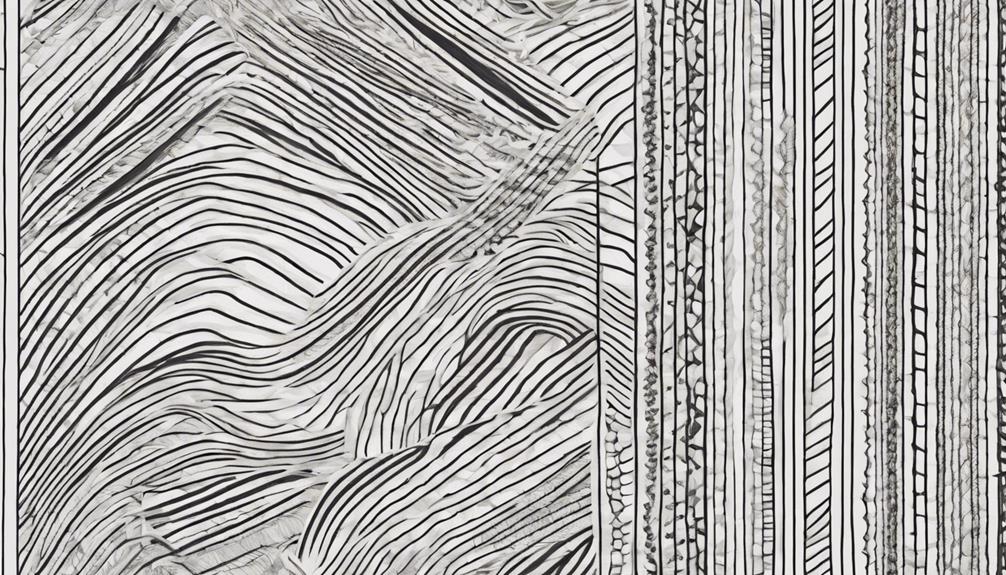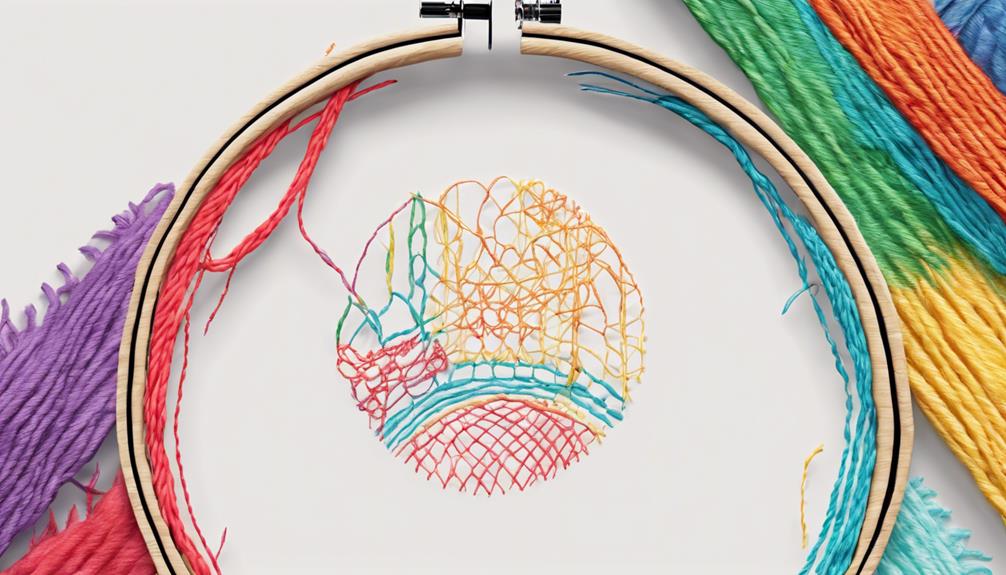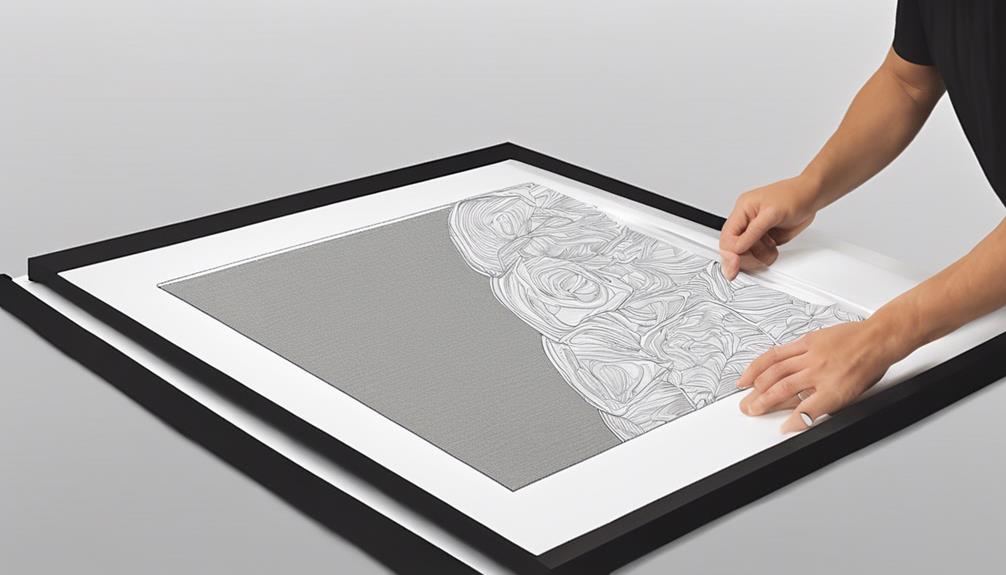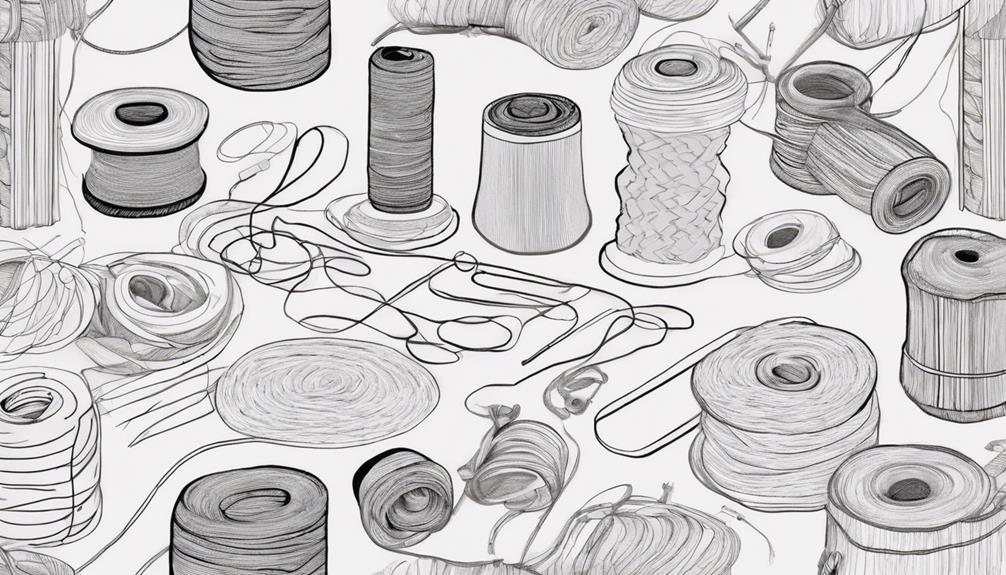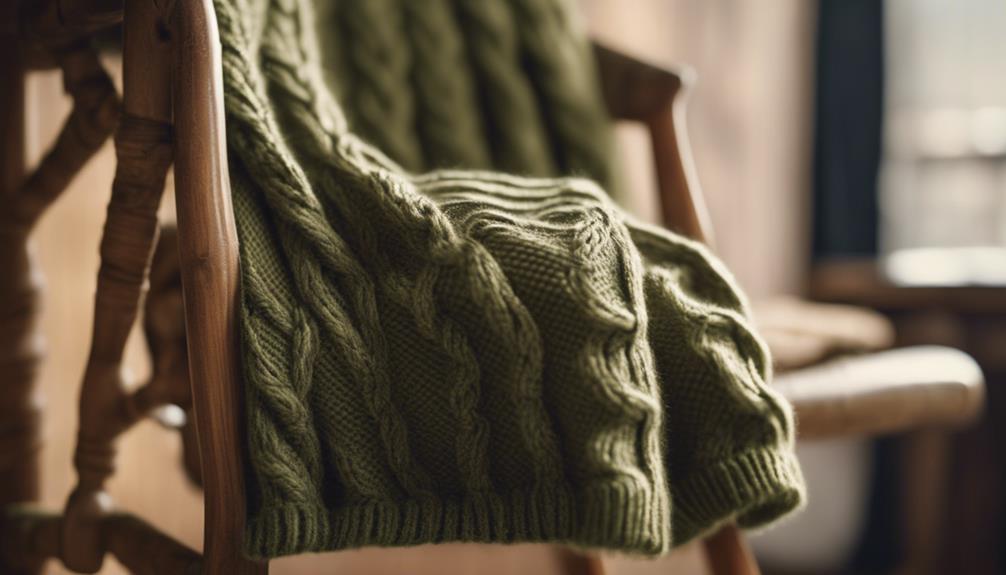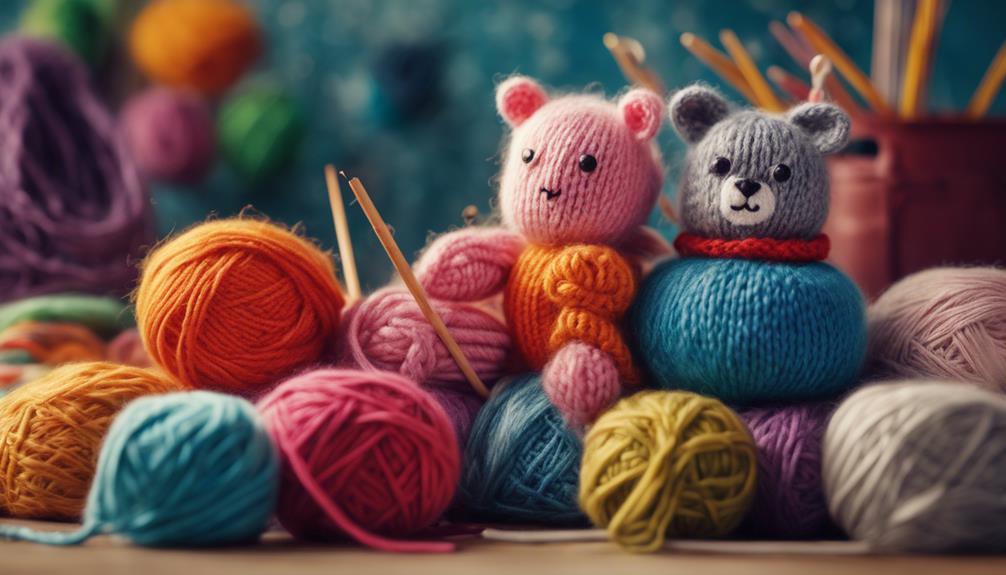In the art world, textile art and fiber art are closely connected. They both use fibers like yarn, fabric, and thread for artistic expression. While textile art encompasses a broader range of techniques, fiber art focuses on the beauty and creativity derived from the fibers themselves. By incorporating weaving, knitting, quilting, and embroidery, these art forms blend traditional skills with modern innovation, offering artists a vibrant outlet for creativity.
Key Takeaways
- Textile art is a broader category encompassing fiber art.
- Fiber art prioritizes aesthetics and artistic expression using fibers.
- Both forms share techniques like weaving and embroidery.
- Fiber art focuses on visual and tactile qualities of fibers.
- Artists blend traditional craft with contemporary art in both textile and fiber art.
Definition and Distinction
Distinguishing between textile art and fiber art involves understanding their unique approaches to using fibers in creating artistic expressions. Fiber art, as a subset of textile art, places a strong emphasis on the aesthetic qualities of the fibers themselves. Artists working in fiber art focus on the visual and tactile aspects of the materials, using them to convey emotions and ideas. This form of art prioritizes artistic expression over functional considerations, pushing boundaries and blurring the line between craft and fine art.
In fiber art, various techniques such as weaving, knitting, embroidery, and quilting are employed to manipulate fibers into intricate designs and textures. The versatility of working with fibers allows artists to experiment with different forms and structures, creating visually striking pieces that engage viewers on multiple levels.
Historical Evolution and Influence

The historical origins of textile and fiber art can be traced back to ancient civilizations, emphasizing their lasting influence on cultural expression and artistic progression. Both art forms have played crucial roles in shaping the artistic scenery throughout history.
- Textile and fiber art have deep roots in art history, with proof of their importance found in archaeological discoveries from ancient civilizations like Egypt, Greece, and Peru.
- Over time, textile and fiber art have progressed from utilitarian objects to forms of artistic expression, showing the development of craft practices into acknowledged art forms.
- The interconnected nature of textile art techniques like weaving, knitting, and embroidery has impacted the evolution of fiber art, demonstrating the smooth integration of traditional and contemporary approaches in both fields.
The development of textile and fiber art emphasizes the lasting influence of these art forms on cultural heritage and artistic innovation, connecting the bridge between history and modern artistic expression.
Fiber Art Techniques Overview
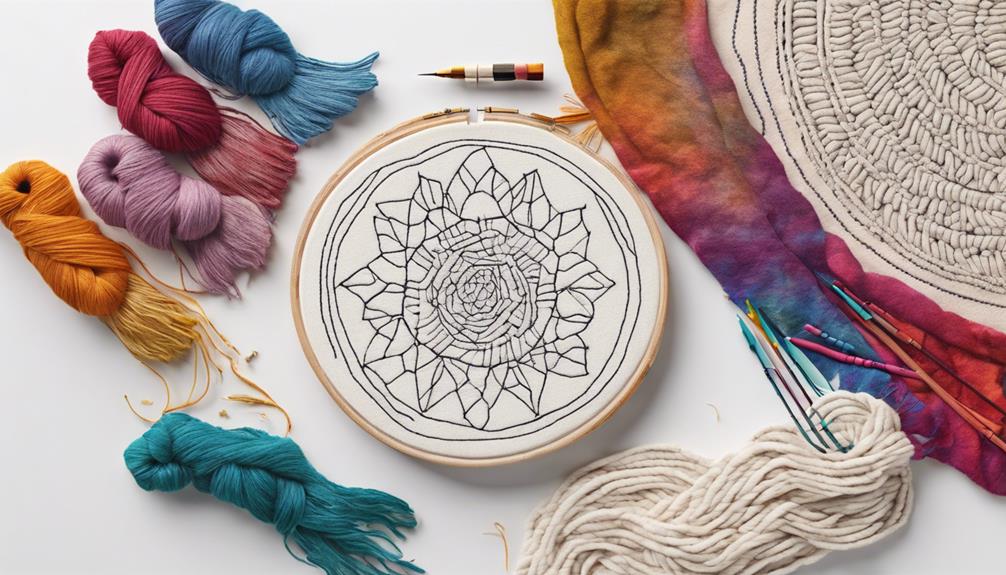
Let's explore the diverse array of techniques used in fiber art, ranging from knitting and crocheting to embroidery, macramé, and felting.
These creation methods in fiber art each bring unique textures and patterns to the final piece, showcasing the versatility of fiber as a medium.
The variety in fiber techniques allows artists to experiment and push boundaries, creating innovative and alluring works of art.
Fiber Art Techniques Overview
Explore a diverse array of methods within fiber art techniques, including knitting, crocheting, embroidery, macramé, and felting.
- Knitting and Crocheting:
Knitting involves creating fabric by interlocking loops of yarn with needles, while crocheting uses a single hook to make intricate patterns with yarn or thread. Both techniques allow for the construction of various textures and shapes in fiber art.
- Embroidery:
Embroidery is the art of decorating fabric using a needle to apply thread or yarn. This technique allows artists to embellish their work with intricate designs, creating detailed and colorful pieces.
- Macramé and Felting:
Macramé involves creating textiles using knotting techniques, while felting binds fibers together using moisture, heat, and agitation. These methods offer unique textures and structural possibilities in fiber art, allowing for the creation of diverse and tactile artworks.
Creation Methods in Fiber Art
Engage with various creation methods in fiber art, utilizing tools like knitting needles, crochet hooks, and weaving looms to manipulate yarn, fabric, or fibers for intricate designs and structures.
Each fiber art technique involves a unique process of creating, whether it's the rhythmic interlocking of loops in knitting, the intricate knotting of threads in macramé, or the precise weaving of fibers on a loom.
Artists skillfully manipulate these materials through various techniques to bring their creative visions to life, resulting in a wide range of decorative pieces and functional items like clothing or home decor.
The process of creating in fiber art offers a versatile medium for artistic expression, allowing artists to explore different textures, colors, and patterns.
Diversity in Fiber Techniques
Immerse yourself in the diverse world of fiber techniques, encompassing a wide array of methods like weaving, knitting, felting, and embroidery. The domain of fiber art is rich with possibilities for creative exploration and expression.
Here are some key points to help you appreciate the diversity in fiber techniques:
- Combination of Traditional and Contemporary Techniques: Artists in textile art often blend traditional methods with modern approaches to create innovative pieces that push the boundaries of the craft.
- Macramé, Basketry, and Tapestry: In addition to weaving and knitting, techniques like macramé, basketry, and tapestry play a significant role in the world of fiber art, offering artists a wide range of tools to manifest their artistic visions.
- Broad Spectrum of Creative Expression: The diversity in fiber techniques allows artists to experiment with different textures, colors, and forms, fostering a broad spectrum of creative expression and artistic exploration within the domain of textile art.
Materials and Supplies Comparison

When comparing materials and supplies for textile art and fiber art, you'll notice distinct differences in the types of resources used for each artistic practice. Fiber art mainly focuses on fibers such as yarn and thread, emphasizing the manipulation of these materials to create intricate pieces.
On the other hand, textile art encompasses a broader range of materials, including fabric, dyes, and embellishments, allowing for a more diverse artistic expression beyond just fibers.
Supplies for fiber art typically include yarn, needles, and specific tools tailored for working with fibers, while textile art may involve a wider array of tools and materials due to its mixed media nature. Textile art integrates various elements beyond fibers, giving artists the flexibility to incorporate different textures and forms into their works.
In contrast, fiber art centers on the intricate manipulation of fibers to convey artistic ideas, highlighting the unique focus of this art form on the beauty and versatility of fibers in creative expression.
Artistic Expression Similarities
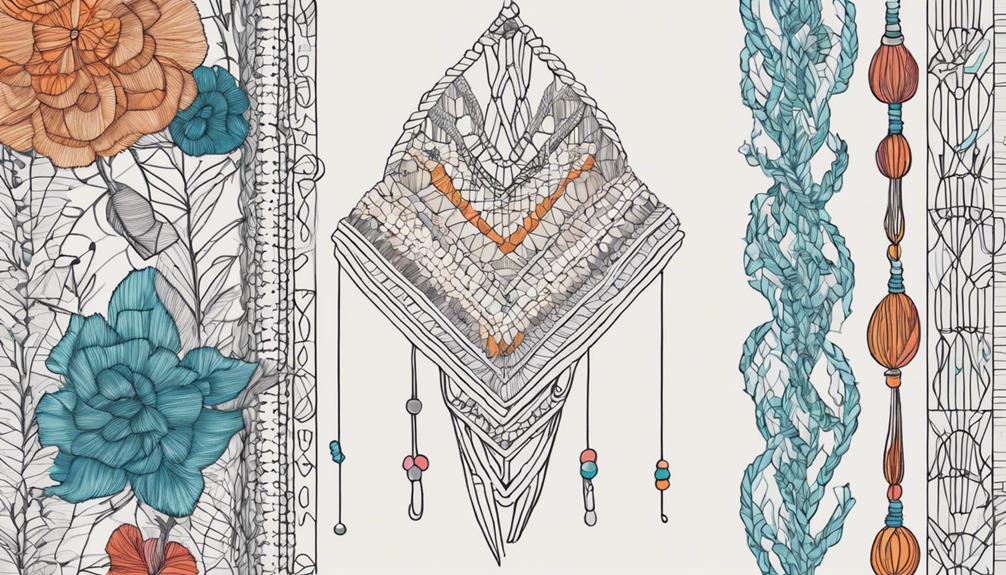
Both textile art and fiber art share a common ground when it comes to expressing artistic ideas using pliable materials. Artists in both fields utilize techniques like weaving and embroidery to convey intricate designs.
The artistic similarities between textile and fiber art highlight the interconnectedness of their creative processes.
Artistic Expression Comparison
In textile art and fiber art, artists express their creativity through manipulating fibers using techniques like weaving, knitting, and embroidery. When comparing the artistic expressions in these two disciplines, you'll find several similarities:
- Materials: Both fiber artists and textile artists work with a wide range of materials, including natural fibers like cotton, wool, and silk, as well as synthetic fibers such as polyester and nylon. These materials offer diverse textures and colors, allowing artists to create intricate and visually engaging pieces.
- Processes: The techniques used in fiber art and textile art overlap significantly. Artists in both fields employ methods like felting, quilting, and dyeing to transform raw fibers into cohesive artworks. These processes require skill, patience, and a deep understanding of how different fibers behave when manipulated.
- Creative Storytelling: Both textile art and fiber art share a common focus on storytelling through materials. Artists use fibers to convey narratives, emotions, and cultural themes, infusing their creations with personal or societal importance. This emphasis on creative storytelling adds depth and meaning to the artwork produced in these disciplines.
Shared Creative Elements
Artists in the domain of textile art and fiber art share common creative elements by utilizing fibers like yarn, fabric, and thread as their primary medium for artistic expression. Both forms involve techniques such as weaving, knitting, quilting, and embroidery to manipulate fibers into intricate designs and structures.
While textile art encompasses a broader range of techniques and applications, fiber art focuses more on the aesthetic value and artistic expression derived from these fibers. Artists in both textile and fiber art often blur the line between traditional craft practices and contemporary art forms in their creations, highlighting the innovative nature of their work.
The connection between textile art and fiber art lies in their shared use of fibers and techniques to create visually stunning and conceptually rich pieces of art. This shared creative foundation allows artists in both textile and fiber art to push boundaries, experiment with new ideas, and create enchanting artworks that mesmerize viewers with their intricate beauty and depth of expression.
Connectivity in Artistry
Utilizing a diverse range of fibers and techniques, textile art and fiber art creators express their artistic visions through intricate designs and structures. Both textile art and fiber art are interconnected through their shared emphasis on creative expression and craftsmanship.
Here are three ways in which connectivity in artistry is manifested in textile art:
- Artistic Techniques: Artists in textile art employ techniques like weaving, knitting, embroidery, and quilting to bring their creative concepts to life. These techniques aren't only traditional but also serve as a means of pushing the boundaries of artistic expression.
- Material Diversity: Textile art thrives on the use of a wide array of materials, including natural fibers like cotton, silk, and wool, as well as synthetic fibers. This diversity allows artists to experiment with textures and colors, enhancing the richness of their creations.
- Cultural Narrative: Both textile art and fiber art have a shared history of cultural storytelling. Through the manipulation of fibers, artists convey narratives that reflect traditions, beliefs, and experiences, adding layers of depth and meaning to their works.
Contemporary Trends Analysis

Recently, contemporary textile and fiber art trends have been characterized by an innovative use of unconventional materials. Fiber arts are experiencing a resurgence with artists pushing boundaries by incorporating materials like recycled plastics, metal wires, and even plant-based fibers. Sustainability and eco-consciousness are becoming central themes, driving artists to explore new ways to create while minimizing environmental impact.
Collaboration is also a key trend, with textile artists partnering with fashion designers and architects to create interdisciplinary works that blur the lines between traditional art forms.
Moreover, the integration of digital technologies is revolutionizing the field, allowing artists to experiment with new techniques like digital weaving and textile printing. This technological advancement is opening up a world of possibilities for artists to further explore the intersection of art and technology. As a result, textile and fiber art are gaining recognition for their conceptual depth and innovative approaches, solidifying their position in the contemporary art world.
Feminism and Fiber Art Connection
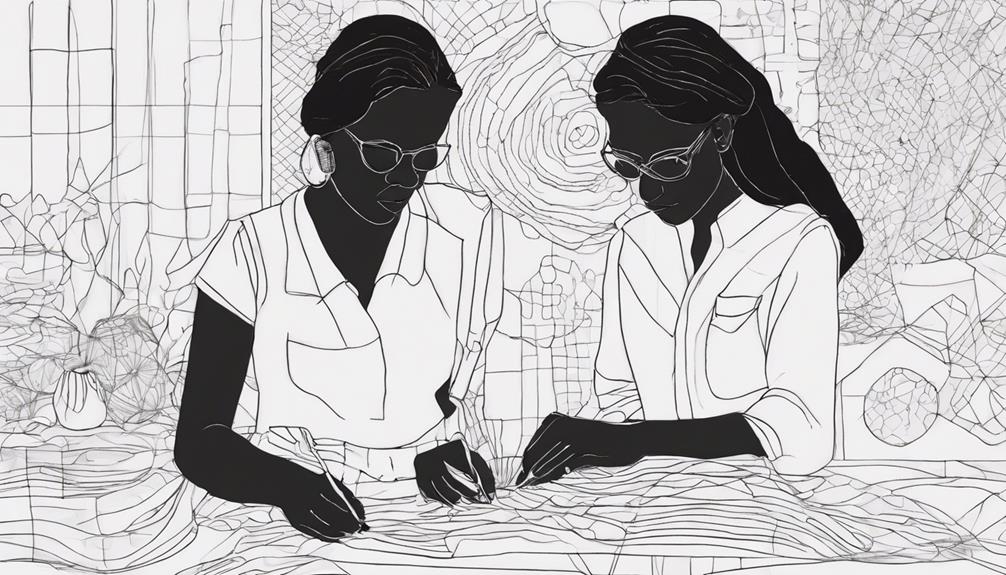
The intersection of feminism and fiber art has historically served as a platform for challenging societal norms and advocating for women's rights, elevating textile work to a form of feminist expression and empowerment. Exploring this connection reveals a deep-rooted history of feminist movements intertwining with the art of textiles:
- Elevation of Textile Art:
Feminism played a pivotal role in elevating textile art to a medium for feminist expression, breaking traditional gender roles and emphasizing the importance of women's creative contributions.
- Challenging Societal Norms:
Textile art became a powerful tool for feminist movements to challenge societal norms, sparking conversations around gender equality, domestic labor, and women's autonomy.
- Craftivism Emergence:
The rise of craftivism, blending craft and activism, showcased how fiber art could be used as a form of protest and political messaging, amplifying feminist voices and advocating for social change.
Institutional Recognition and Impact
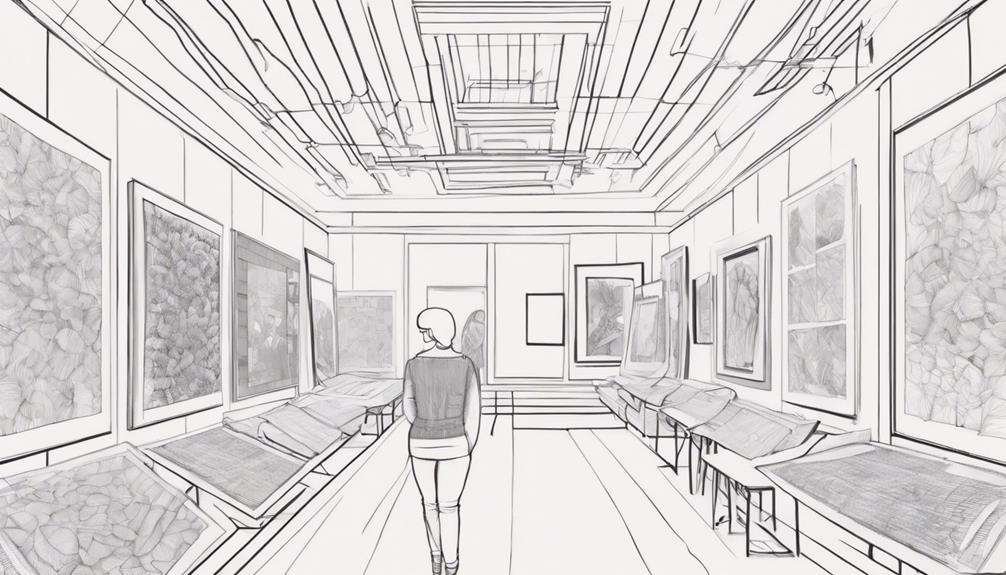
Recognition of textile art within institutional settings has been steadily increasing as artists push boundaries and redefine the boundaries between craft and fine art. Museums like the Museum of Modern Art have started featuring textile art pieces, highlighting the intricate creations that bridge traditional textile work with contemporary art.
This institutional recognition signifies a shift in the art world's perception of textile art from mere decoration to significant artistic expression. Textile art's role in transforming fibers into complex abstractions has influenced the integration of craft and fine art, showcasing the diversity and innovation within the art market.
Despite facing challenges initially, textile art has now gained contemporary reevaluation and newfound institutional recognition. As artists continue to push the boundaries of what textile art can achieve, its impact on institutional settings and the broader art world is becoming increasingly evident, solidifying its place as a respected form of artistic expression.
Market Trends and Cultural Relevance

Amidst evolving consumer preferences and artistic innovations, the market trends and cultural significance of textile art continue to captivate audiences worldwide.
- The United States market for textile art has experienced significant growth in recent years, driven by a surge in demand for unique, handcrafted pieces that celebrate individuality and creativity.
- Textile art holds a pivotal role in cultural expression and preservation, with artists showcasing diverse traditions and techniques that reflect the rich tapestry of global heritage within the United States.
- Contemporary textile art trends in the United States are characterized by a harmonious blend of traditional craftsmanship and cutting-edge technologies, creating a dynamic landscape that appeals to a broad audience excited to witness the fusion of the old and the new in artistic creations.
Collaborations between textile artists and other creative industries, such as fashion and design, further enhance the cultural significance and evolution of textile art, ensuring its continued importance in the artistic domain of the United States and beyond.
Frequently Asked Questions
What Is the Difference Between a Fiber and a Textile?
A fiber refers to the basic building blocks used in textiles, like yarn or fabric.
Textiles, on the other hand, are the end products made by weaving, knitting, or other techniques using these fibers.
Understanding this distinction can help you appreciate the intricate process of creating fabric-based art.
Is Textile Art Fiber Art?
Textile art and fiber art share a close relationship, intertwining creativity with various fiber manipulation techniques.
Textile art typically refers to creating art using fabrics, while fiber art encompasses a broader spectrum, including mediums like yarn, paper, and even recycled materials.
Artists in both worlds often push boundaries, blending traditional craftsmanship with contemporary innovation to showcase the beauty and versatility of fibers in their creations.
What Is the Difference Between Textile Craft and Fiber Craft?
When differentiating between textile craft and fiber craft, it's important to mention that textile craft covers a wider range of materials such as fibers from plants, animals, and synthetics, while fiber craft specifically involves fabric components like yarn.
Textile art often explores the historical and cultural importance of using fibers, whereas fiber art mainly concentrates on the aesthetic value of the final piece.
Both crafts use different methods, but the focus varies regarding functionality and artistic expression.
What Is Another Name for Fiber Art?
Another name for fiber art is textile art.
It's a term that highlights the creative use of fibers from various sources, such as plants, animals, insects, or synthetics.
This art form emphasizes the aesthetic qualities of materials like fabric and yarn.
In different regions or settings, you might hear fiber art referred to as textile art, showcasing the flexibility and interconnectedness of these artistic expressions.
Conclusion
To sum up, textile art is indeed considered fiber art. Just like threads woven together to create a beautiful tapestry, the connection between these two art forms is strong and undeniable.
They share a rich history, similar techniques, and a powerful means of artistic expression.
So next time you admire a textile piece, remember the intricate threads that make up its beauty, like a delicate web of creativity spun from the loom of imagination.

